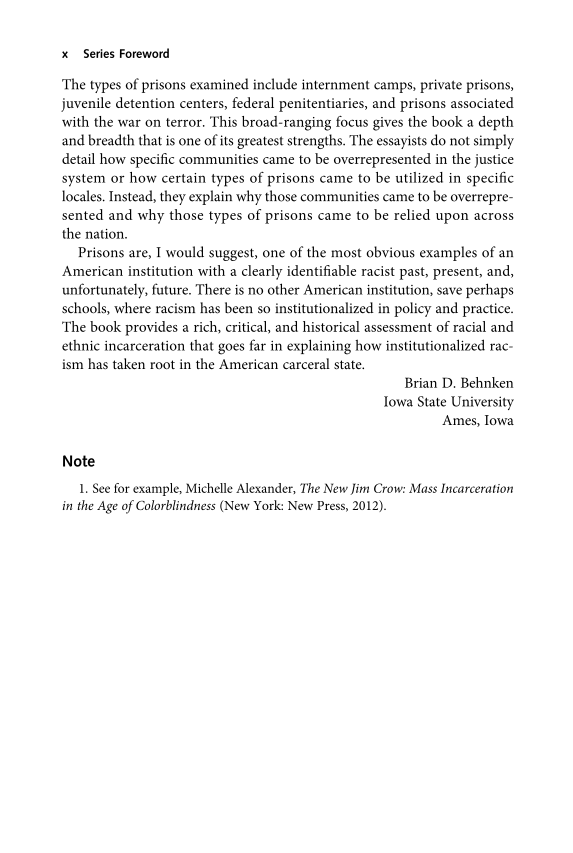The types of prisons examined include internment camps, private prisons, juvenile detention centers, federal penitentiaries, and prisons associated with the war on terror. This broad-ranging focus gives the book a depth and breadth that is one of its greatest strengths. The essayists do not simply detail how specific communities came to be overrepresented in the justice system or how certain types of prisons came to be utilized in specific locales. Instead, they explain why those communities came to be overrepre- sented and why those types of prisons came to be relied upon across the nation. Prisons are, I would suggest, one of the most obvious examples of an American institution with a clearly identifiable racist past, present, and, unfortunately, future. There is no other American institution, save perhaps schools, where racism has been so institutionalized in policy and practice. The book provides a rich, critical, and historical assessment of racial and ethnic incarceration that goes far in explaining how institutionalized rac- ism has taken root in the American carceral state. Brian D. Behnken Iowa State University Ames, Iowa Note 1. See for example, Michelle Alexander, The New Jim Crow: Mass Incarceration in the Age of Colorblindness (New York: New Press, 2012). x Series Foreword
Document Details My Account Print multiple pages
Print
You have printed 0 times in the last 24 hours.
Your print count will reset on at .
You may print 0 more time(s) before then.
You may print a maximum of 0 pages at a time.
















































































































































































































































































































































































































































































































































































































































































































